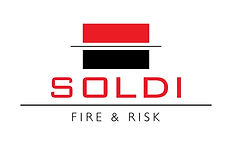Soldi Fire and Risk delivers clear, NFPA and IBC-based Fire Risk Assessments across the Texas triangle.
We specialise in large and complex buildings, including hospitals, healthcare facilities, leisure centres, manufacturing plants, and mixed-use developments.
Our reports meet the requirements of NFPA 1, NFPA 101, and the International Fire Code. We support developers, building owners, and contractors with construction-phase fire safety, occupancy handover reviews, and ongoing building compliance.
Every report focuses on practical, code-based advice tailored to your building and operation.

Fire Risk Assessments
Soldi Fire and Risk provides clear, code-based fire risk assessments through-out the Texas triangle.
We assess buildings, facilities, and developments against NFPA and International Fire Code (IFC) requirements. Our reports identify real-world risks and outline practical steps for compliance and safety improvement.
We focus on occupancies where life safety and fire protection are critical, including healthcare, residential, industrial, and commercial buildings.
Our assessments are written in plain English, easy to implement, and structured to support both owners and code officials. Typical work includes:
-
NFPA-Based Fire Risk Assessments for occupied and vacant buildings
-
Fire and Life Safety Evaluations under NFPA 101, NFPA 1, and IFC
-
Emergency Planning Reviews covering alarm, suppression, and evacuation procedures
-
Fire Department Access and Water Supply Evaluations
-
Construction Phase Fire Safety Reviews under NFPA 241
-
Post-Incident or Insurance-Driven Assessments
Each report gives clear actions, responsibility allocation, and risk ratings based on likelihood and consequence — so clients can prioritise what matters most.
How We Work
Our approach combines field experience with NFPA methodology. Every assessment follows three clear stages:
1. Site Review
We inspect the property and operations to identify ignition risks, fire load, compartmentation, and egress conditions.
2. Code Comparison
We assess compliance against NFPA, IFC, and local amendments, referencing practical interpretation rather than generic checklists.
3. Reporting and Action Plan
The final report outlines the risk level, recommended actions, and any items requiring further review or engineering analysis.
All recommendations are realistic and proportionate, written for the people managing the building, not just for auditors.
Our goal is to make fire safety documentation understandable, auditable, and directly linked to how your building operates.
We help you achieve compliance, reduce liability, and create a safer working environment aligned with Texas codes and NFPA standards.
